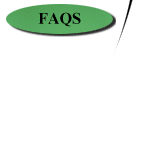



| Lesson 5: Creating Hyperlinks |
The Anchor Container(<A>. . .</A>)
Use the anchor container to create links to documents on your computer, such as your portfolio or a letter of recommendation, or to web pages.
Relative Links (<A NAME=". . .">. . .</A><A HREF="#. . ." >. . .</A>)
|
Hypertext links may be used in several ways to enhance the effectiveness of your web resume. For example, you might provide links on your resume that will direct the reader to another part of your resume, to your e-mail address, to your portfolio, to letters of recommendation, or to the website of a former employer. The anchor tag marks the beginning and end of a hypertext link. HREF="URL" Indicates the URL or filename that the hypertext link points to. Linking to text within your resume. To make your resume more user-friendly, you may want to create links that will allow the reader to jump quickly from one place to another. For example, near the top of your page you might create links to headings such as "Employment History," "Education," or "Volunteer Work" which would allow the reader to quickly access desired information. Before making the link, you must create an anchor. Following are the instructions for creating an anchor:
After marking your link's destination with an anchor, follow these
instructions to create your link:
<A HREF="#Objective">
|
Link to a document on your computer: (<A
HREF=". . .">. . .</A>)
- Locate the text or graphic that you want to use as your link.
- Before the text or graphic, insert the tag
<A HREF="filename.html">
"Filename" is the name of your document.
- Close the link with the </A> closing tag.
NOTE: Remember to follow syntax precisely. Do not put spaces before or after the equal sign. Also, do not put spaces in the names of your files.
Link to a World Wide Web page: (<A HREF=". . .">. . .</A>)
- Locate the text or graphic that you want to use as your link.
- Before the text or graphic, insert the tag <A HREF="URL">". URL" would be the address of the web page.
- Close the link with the </A> closing tag.
Example:
|
Syntax
|
Result
|
|
Webster |
NOTE: Remember to follow syntax precisely. Do not put spaces before or after the equal sign.
Link to an e-mail address: (<A HREF="MAILTO: . . .">. . .</A>)
- Locate the text or graphic that you want to use as your link.
- Before the text or graphic, insert the tag
<A HREF="mailto:emailaddress">
("emailaddress" would be the e-mail address you wish to make a link.)
-
Close the link with the </A> closing tag.
NOTE: Remember to follow syntax precisely. Do not put spaces before or after the colon.
Example:
|
Syntax
|
Result
|
|
Contact Webmaster |
| Home | Lesson 1 | Lesson 2 | Lesson 3 | Lesson 4 | Lesson 5 | FAQS |